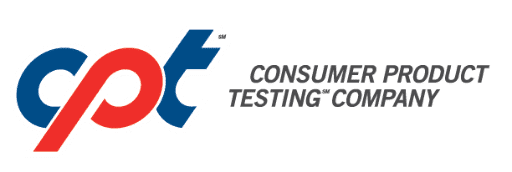Virtually all Pharmaceutical Over-the-Counter (OTC) and Prescription (Rx) drug products distributed within the USA are required to display an expiration date on their labeling. Expiration dates must be supported by stability testing, which has been conducted in accordance with current FDA and ICH Guidelines and cGMP requirements.
Each strength of a drug product and each primary package and closure system in which it is distributed must be supported by stability testing. This requirement may be found in the Code of Federal Regulations, 21 CFR Part 211.137 – “Expiration Dating” and Part 211.166 – “Stability Testing.”
What is a Stability Study and What is its Purpose?
A stability study is a program of testing that is designed to provide evidence about how the quality of a drug substance or drug product varies with time under the influence of a variety of environmental factors.
These factors commonly include temperature, humidity and light. Stability testing enables the recommended storage conditions, retest periods and shelf life to be established. (Refer to FDA Guidance for Industry Q1A(R2) “Stability Testing of New Drug Substances and Products”)
What Types of Stability Studies are Commonly Conducted for Drug Products?
Stability studies are required to be conducted on drug products under the conditions of storage indicated on the product label, including any other conditions that the drug product might be exposed to during manufacturing, storage and shipping activities.
As a result, there are a number of stability conditions that are commonly employed to determine the stability of a drug product in its marketed package(s). Examples of the most common types of stability studies are as follows:
Real-Time or Room Temperature (RT) Stability Study
A stability study conducted under controlled temperature and humidity approximating conditions of long-term storage.
For drug products distributed within the USA, long-term stability storage conditions are 25 +/- 2oC with 60 +/- 5% RH.
Accelerated Stability Study
A stability study conducted under exaggerated conditions in an attempt to accelerate the aging process, i.e., the rate of chemical degradation and/or physical change.
For drug products distributed within the USA, virtually all accelerated stability studies are conducted under storage conditions of 40 +/- 2oC with 75 +/- 5% RH.
Intermediate Stability Study
A stability study that is conducted under conditions that are between long-term and accelerated storage conditions.
For drug products sold within the USA, intermediate conditions are 30 +/-2oC with 65 +/- 5% RH.
Samples stored under intermediate conditions are typically only tested if a failure is encountered during the testing of samples stored under accelerated storage conditions.
Freeze / Thaw Stability Study
A study that is conducted at 5oC (without humidity control) to determine the effect that freezing and subsequent thawing have on the stability of a product.
Such studies may be conducted using single or multiple freeze/thaw cycles, with three (3) cycles being the most commonly used.
Photostability Study
A study that is conducted to determine the effect that either whole or ultraviolet light has on the stability of a product.
This is not required for drug products packaged in opaque container systems. (Refer to ICH Guideline Q1B “Stability Testing: Photostability Testing of New Drug Substances and Products.”)
Bulk Hold Stability Study
A stability study that is conducted under long-term conditions to assess the stability of a product batch in its bulk container.
This applies to situations where a drug product may be stored in a bulk container for a period of time prior to its placement into end-user packaging.
A study that is conducted to determine the period of time that a product remains suitable for use after its container system has been opened and reclosed.
There currently is no requirement for the determination of PAO for any product distributed within the USA. However, the EU requires the determination of PAO and the displaying of the PAO on the labeling of cosmetic products having an expiration date of 30 months durability or greater. Products with less than 30 months of durability require a best-used-by date.
Although not required in the USA, some manufacturers have started to implement the practice of determining the PAO for products that they distribute within the USA.
This may be driven by savvy consumers who may be familiar with and prefer the EU practice of displaying PAO on product labeling, as they are beginning to make their preferences known to US manufacturers.
How is Expiration Dating Determined for the Launch of a New OTC Drug Product?
FDA requires that the expiration date of each pharmaceutical OTC drug product be supported by Real-Time (RT) stability studies. That said, FDA understands that drug owners would face undue hardship if they were required to wait the full two years it would take to generate RT stability data before launching a new OTC drug product with a 2-year expiration date.
As a result, FDA allows for the extrapolation of accelerated stability data for determining expiry dating for the initial launch. However, FDA expects that the same batch that was used for the accelerated study also undergo concurrent RT stability testing. Accelerated stability studies alone cannot be used to support the expiration dating of OTC drug products. The results of accelerated studies must be confirmed by conducting RT stability studies.

Interpretation of Accelerated Stability Studies
As stated in the previous section, the results of accelerated stability studies may be used to approximate the shelf life of a new pharmaceutical OTC drug product for launch.
Historically, the FDA has permitted three (3) months of acceptable accelerated stability test results to support a 2-year expiration date for a product launch. However, in recent years, FDA has tightened up its stability requirements for pharmaceutical Rx drugs, now requiring six (6) months of accelerated stability and one (1) year of RT stability data at the time of submission.
Based on this data, the FDA now commonly grants only an 18-month (sometimes less) expiration date. Since OTC drug policy eventually tends to follow along the lines of Rx drug policy, it is prudent for the launch of new OTC drug products that six (6) months of accelerated stability testing now be conducted to support a 2-year expiry date for the launch.
It should also be noted that anything less than three (3) months of acceptable accelerated stability data cannot be routinely used to support any expiry date.
Once the Expiration Date of an pharmaceutical OTC Drug Has Been Established in Each Container System Prior to Launch, What Other Stability Testing Is Required?
- The first three (3) commercial batches of the drug product must be placed on RT Stability for the period of time expressed as the expiration date.
- Each year that a drug product continues to be manufactured, one (1) batch which has been manufactured within that calendar year must be placed on RT Stability.
- Any substantial change that is made to a drug product, such as (but not limited to) a change in formula or its container system, the site of manufacturing, or the process itself, must be supported by stability testing so as to demonstrate the continuing stability of the product. Critical changes require the re-establishment of shelf life.
General cGMP Requirements for Conducting Drug Stability Studies:
- Stability studies must be conducted in accordance with an approved Stability Protocol which indicates (at minimum) the product under test, the testing to be performed, product specifications, testing methods, storage conditions, test points, and a description of the container/closure system.
- Test methods used for drug Assay and Impurity testing must be validated and stability-indicating for the specific product formulation under test. (A stability-indicating assay is one that is demonstrated to be free of interferences from impurities, degradants, or other constituents that may be present in the product.)
- Stability studies must be conducted in their marketed containers with primary labeling in place.
- FDA allows for “bracketing” or a “matrix” approach to conducting stability testing if the same basic formula is used for different strengths of the drug or the product packaging is identical except for the size and quantity of product it contains. (Refer to FDA Guidance for Industry Q1D “Bracketing and Matrixing Designs for Stability Testing of New Drug Substances and Products.”)
- Products packaged in containers equipped with dispensing devices (e.g., pump sprays, dispensing nozzles) or cap liners must be stored with the product in direct contact with the dispensing device or cap liner. (Either an “inverted” or “horizontal” orientation is acceptable.)
- “Stiff” ointments/gels packaged in tubes should be sliced open, and the “top,” “middle,” and “bottom” of the product assayed separately at each test point.
Supporting a 3-Year Expiration Date
There are only two (2) ways to support a 3-year expiry date for an pharmaceutical OTC drug product:
- By generating 3 years of acceptable Real-Time stability data.
- By taking samples that have been stored under RT stability conditions for one (1) year and subjecting them to an additional three (3) months of storage under accelerated conditions, and then obtaining acceptable test results from those samples.
Extending the accelerated storage time or storing under harsher conditions will not routinely support a 3-year expiration date.

Summary
FDA requires that the labeling of all drug products distributed within the USA indicate an expiry date. Expiry dating must be based upon stability testing, which has been conducted in full compliance with cGMP requirements, and it must meet FDA/ICH Guidelines. The owner of a drug product must ensure that stability testing has been conducted under every condition to which that product might be exposed to during manufacturing, storage and shipping.
FDA allows new pharmaceutical OTC drug products to be launched with an expiry date that is based upon accelerated stability testing HOWEVER that testing must be confirmed through the conducting of Real-Time stability studies. Once the shelf life of a drug product has been established in all package configurations in which it is distributed, FDA still requires that a new batch of that product be placed on RT stability each year that the product continues to be manufactured.
Any significant changes made to a product’s formulation, packaging or processing must be supported by stability data to confirm that the change has not impacted stability in a negative manner.
Yes, the planning of stability studies and the conducting of stability testing can seem a bit daunting, but the experts at CPT℠ can help. CPT℠ can provide guidance in planning and conducting the appropriate stability testing for your products in the most efficient and cost-effective manner, while still maintaining FDA, ICH and cGMP compliance.
How can CPT℠ Labs help test your product?
When it comes to launching a new pharmaceutical OTC Drug product in the U.S., CPT℠ Labs can provide expert testing and consulting assistance nearly every step of the way.
This includes early-stage consulting assistance in assuring that your new product complies with the correct OTC Drug Monograph; raw material and container/closure system testing; In-Process, Product Release and Stability testing; Method Development and Method Validation services; Process Validation and Cleaning Validation testing; OTC Monograph efficacy testing (SPF, for example).
You can rely upon our expert capabilities to assist you in bringing your new OTC Drug product to market in the most efficient and compliant manner.


